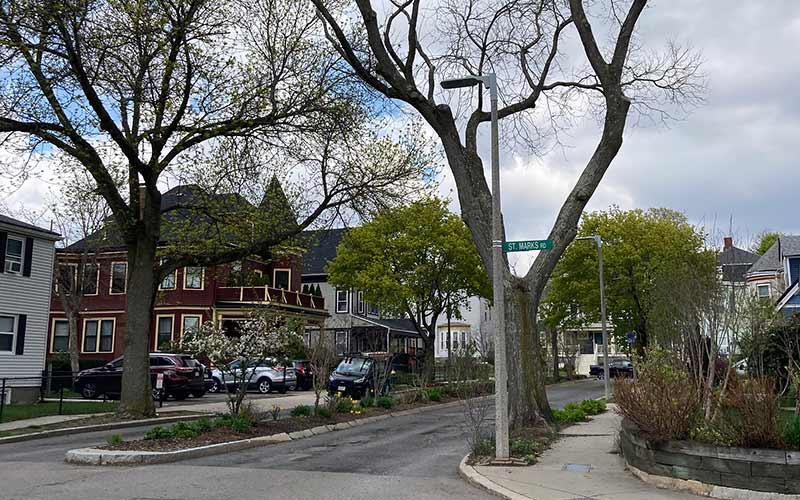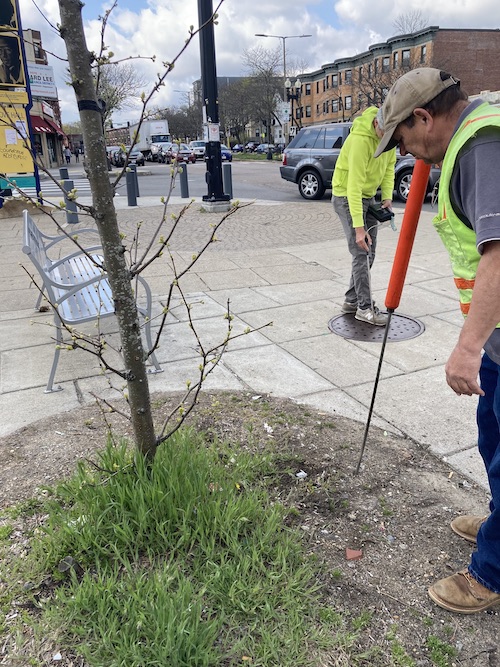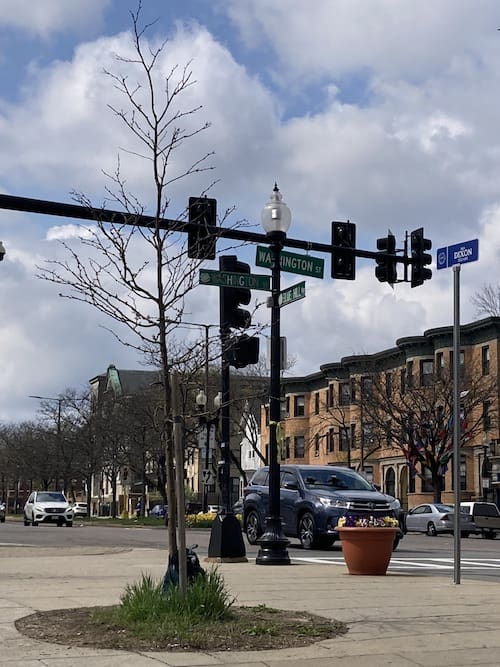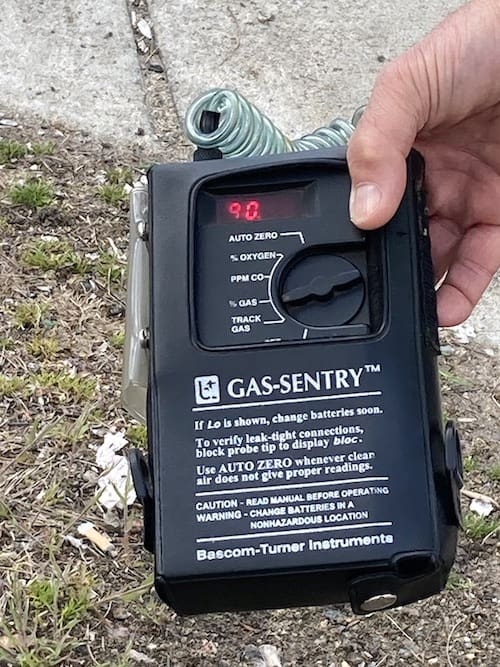
An unhealthy tree, adjacent to a gas main, struggles to survive.
Imagine walking down a street on a scorching day. The sun is blistering hot. The air is thick and heavy. Pavement and asphalt soak up all that heat and reflect it back, making the heat feel even worse.
If you live in a neighborhood with trees, you might feel better. They provide shade and help cool the air. But in areas with few trees, your only escape might be to retreat indoors to blast the air conditioner.
It turns out that trees are an instrumental tool in helping us cope with the impacts of climate change. But they provide us with benefits beyond just shade. They produce oxygen, filter pollution, protect us from wind, and provide aesthetic value contributing to our well-being.
They are vital in urban areas because they cool city neighborhoods when a searing sun heats sidewalks, roads, buildings, and parking lots. Trees cool the air not just by providing cover from the sun but through transpiration – which releases water vapor from their leaves – keeping temperatures more comfortable for all of us.
But here’s an alarming fact: Our trees are in jeopardy because of methane leaks into soil from natural gas pipes. And that has serious ramifications for human health and the climate, especially in lower-income and communities of color, which often have fewer trees to begin with.
That’s why CLF is suing National Grid to make them clean up their act. For too long, this utility company has allowed gas leaks to kill off vegetation and even pose a threat to human health. While National Grid should absolutely fix their failing pipes, this is a short-term solution. It’s past time for utilities to put polluting fossil fuels like natural gas behind us and embrace more sustainable options like clean electric power.
Trees Reduce Deadly “Heat Island Effect”
Pavement, asphalt, and concrete warmed by the sun absorb and emit higher concentrations of heat in what is known as heat island effect. Trees, on the other hand, deflect heat. In city neighborhoods without many trees, known as heat islands, temperatures during the day can easily register one to seven degrees higher than in areas with more trees.
The heat island effect can also lead to higher air pollution and climate-damaging emissions, worsening conditions like asthma and other respiratory illnesses. Residents in these areas also need to use more energy to cool their homes, which leads to higher electricity bills. As the climate continues to warm, these problems will become even more serious.
New England is not immune to the heat island effect. A research study published in 2021 found that three New England cities – Boston, Providence, and Burlington, Vermont – ranked within the top 20 hottest heat islands in the U.S.
Tree disparity is also seen in New England cities like Manchester, New Hampshire, where lower-income neighborhoods and residents of color endure less tree cover than predominantly white neighborhoods. Such disparities are unacceptable. And methane leaks threaten to make them worse.
The Problem with Natural Gas
In 2022, 46% of New England’s energy resources came from natural gas. Gas is primarily made up of methane – a more potent greenhouse gas than even carbon dioxide. And the highest source of methane emissions in New England is the natural gas system that powers and heats our region’s homes and businesses.
In New England, this is a considerable problem because many of the gas pipes snaking under our streets were installed before 1970 – and one in four were installed before 1940. Older, wrought iron lines are especially prone to breakage and methane leaks. While most of these leaks would not necessarily result in a gas explosion, they still present hazards, particularly to vegetation and our climate.
CLF’s investigators found (and immediately reported) 15 gas leaks that pose a serious risk of explosion or fire. As of June 2024, the National Grid’s own data shows more than 8,000 unrepaired leaks.
How Gas Leaks Suffocate Trees
Multiple studies show a link between poor tree health and exposure to elevated methane levels in the soil. National Grid – which provides gas to Massachusetts and New York – has cited dying vegetation as evidence of a gas leak. This is because elevated methane levels in the soil result in lower oxygen levels. The depletion of oxygen in the ground limits the amount of oxygen a tree can absorb through its roots. Without enough oxygen, trees suffocate to death.
In a 2020 study in Chelsea, Massachusetts, researchers found that, on average, the dead or dying trees had 30 times greater odds of being exposed to methane than the healthy trees. The results also saw the highest concentrations of methane in soil located closest to the street – where natural gas mains are typically installed. The study concluded that there was a quantified association between methane exposure and dead street trees. Our own investigators found more than 200 public shade trees that are dead or dying from methane poisoning.
CLF’s investigators also found notable gas leaks in Chelsea and the Boston neighborhoods of Chinatown, Dorchester, East Boston, Jamaica Plain, Mattapan, Roslindale, Roxbury, South End, and along the Commonwealth Avenue Mall in Back Bay. Most of these neighborhoods are environmental justice communities, meaning that they are already at risk of pollution and have less access to green space.
What is CLF Doing?
Our lawsuit will hold National Grid accountable for the harm they are causing to our shade trees and our communities. This continues CLF’s efforts to push the utilities to transition away from natural gas, such as by building more geothermal heating and cooling systems.
Clean, renewable energy projects will protect trees from methane leaks, help prevent heat islands, safeguard communities from the risk of fires and explosions, and curb the climate crisis.






